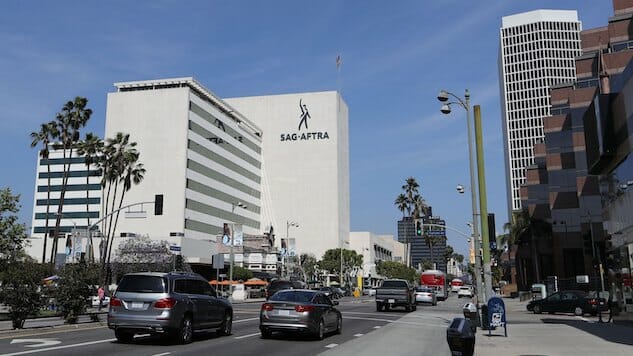Sexperts Wanted: SAG-AFTRA Reveals New Protocol for Use of Intimacy Coordinators on Set
Photo by Victor Decolongon/Getty
TV sets have long included stunt coordinators, dialect coaches and choreographers. Now, the Screen Actors Guild-American Federation of Television and Radio Artists (SAG-AFTRA) suggests they add intimacy coordinators to the crew, as well.
On Wednesday, SAG-AFTRA, a union of over 160,000 entertainment and media professionals, released “Standards and Protocols for the Use of Intimacy Coordinators,” a document suggesting and guiding the use of intimacy coordinators in the production of physically intimate scenes.
Intimacy coordinators are often likened to stunt coordinators; much like stunt coordinators, intimacy coordinators are brought in for “intimate” scenes—ranging from a kiss to an assault—to ensure all actors involved are comfortable, and have their questions and concerns heard out, and directors satisfy their creative vision. They often act as a sort of liaison between actors and directors.
An intimacy coordinator may communicate with an actor and director to determine how much nudity is necessary to a scene and an actor is comfortable with; get scene partners on the same page with regard to hand placement and body positioning; or ensure nothing in a scene is triggering for an actor who has experienced trauma.
SAG-AFTRA’s directive, unprecedented considering the newness of the intimacy coordination vocation at all, appears however not to be a mandate, but rather a set of guidelines for the use of intimacy coordinators, with an implicit nudge towards their inclusion on set.
Its protocols state that the intimacy coordinator “meets with the executive producer/writer and director at a minimum … to determine 1) degree of nudity, 2) specifics of simulated sex,” “serves as a resource for directors and assistant directors (as needed) with any specialized movement or choreography to ensure consent and safety while enhancing believability and director vision,” and “may verify that a final cut is consistent with contractual obligations and riders.”